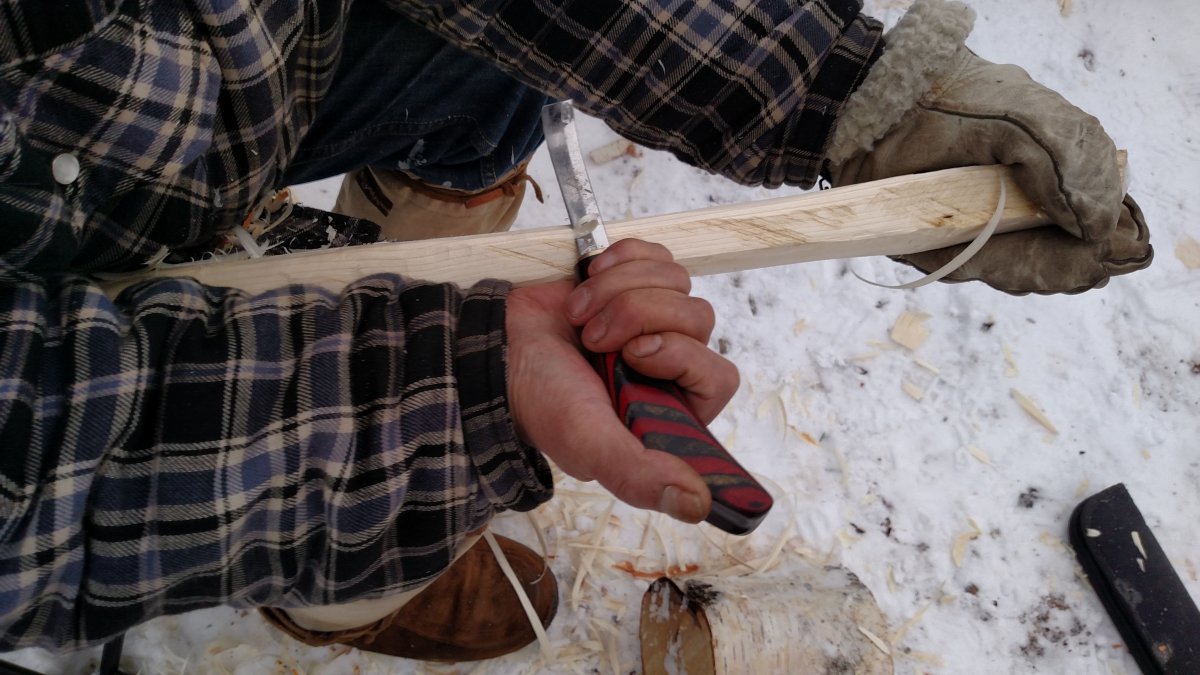Most modern people don’t use their hands for much. At the field school we use them hard, every day. From tying knots, holding knives and tools, swinging axes, paddling and poling canoes, the body is the engine that gets work done in the woods, and it usually falls on the hands to do the brunt of it. It is folly to think that you could go from an office environment to rigorously using your hands every day without an adjustment period. Think of it like starting a new and intense weight lifting program, but without a lot of time off between workouts.
A question we get a lot is what kind of physical shape does a person need to be in to successfully complete a semester course or long expedition with us. While a higher level of physical fitness makes the process easier and more enjoyable, I have always hesitated to give specific regimens for strength training. That changes this winter. Over the past few years we have had several people develop repetitive stress injuries in their hands and forearms. I’m working on developing a pre-field school exercise routine to minimize this.
Ideally, someone coming to Jack Mountain would be actively using their hands on a daily basis for a few months before arriving. Here are a few ideas to keep in mind:
- Use your knife. Carve some feather sticks, strip the bark off of a stick – anything really. Not only will it build strength but will also add muscle memory.
- Grip and lift things in a different manner: pinch grip heavy objects like weight plates or thick books.
- Carry heavy things, such as a water jug to the end of your driveway and back.
- Formal weight training. Wrist curls with a light dumbbell will target the area.
For a great resource on all of these exercises that goes into great detail, I highly recommend Ross Enemait’s book Untapped Strength. Ross trains fighters and the scope of the book is beyond what we’re after, but the explanations are clear and exercises are useful for our purposes of building more resilient bodies. (For more information on Ross Enemait and his books, click here.)
Like many people will take the stairs instead of the elevator or park at the back of the parking lot and walk a little further, ideally the lead up to a big expedition or month in the woods contains a gradual build up of the body. So too with training your lower arms. Start by engaging those muscles daily, pushing yourself a little bit so as to fully engage them. Some ideas include trying to carry all of the groceries in one hand, carry something in your hand with a pinch grip when you go for a walk, use some hand tools for a project and vary your grips. We want you to be successful on your field school course. Training your hands, wrists and forearms in advance of your time in the woods will help with this.








